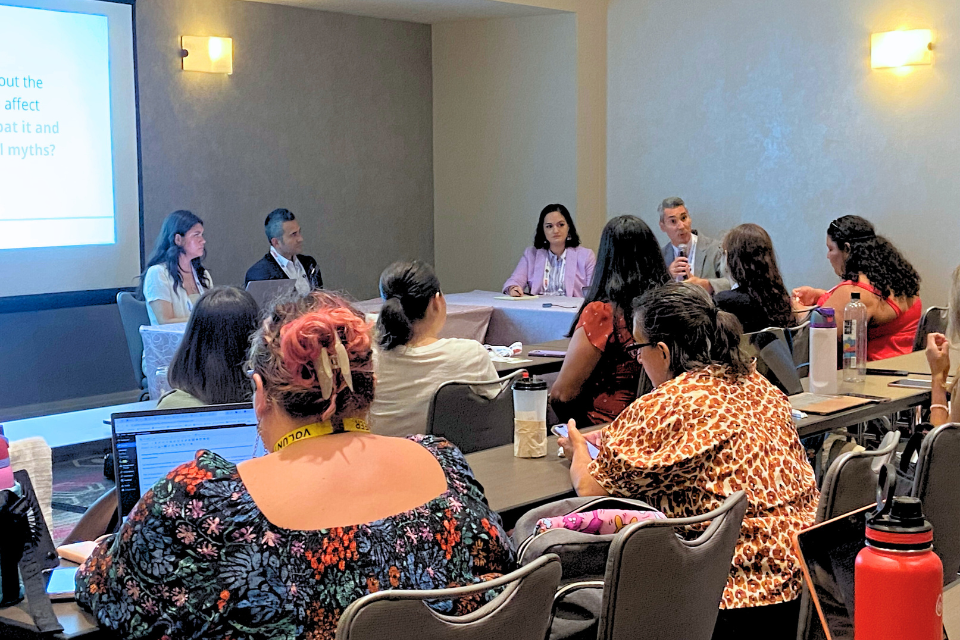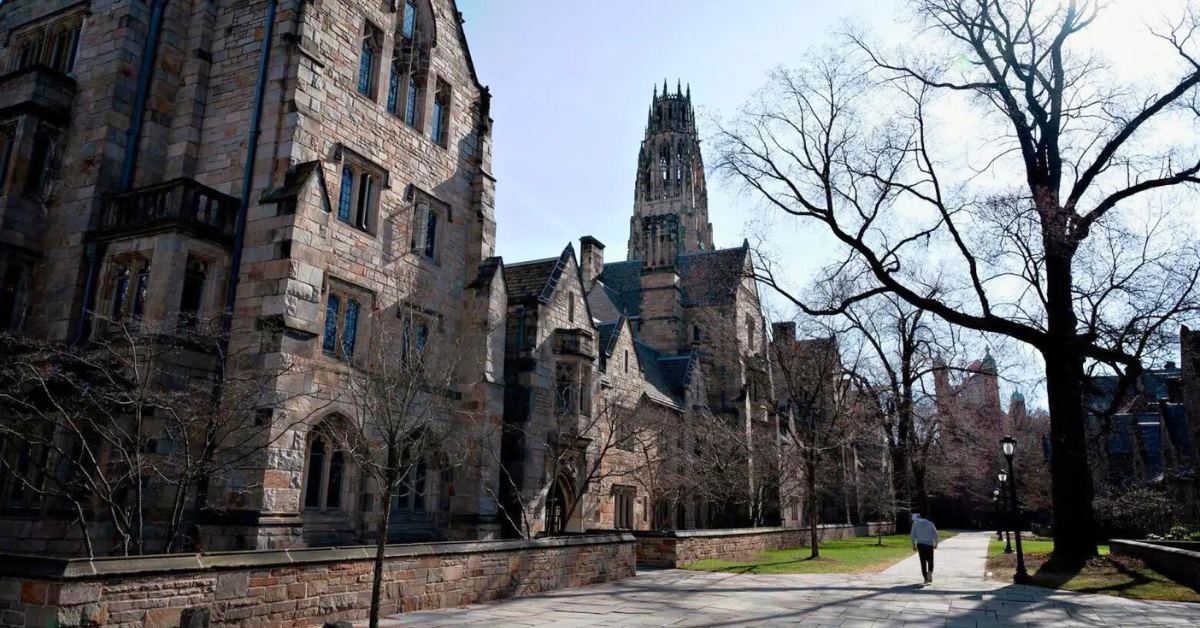Growing up in Puerto Rico, Lourdes Montalvo was swept up in a massive wave of excitement and personal engagement that would accompany the quadrennial elections on the island.
Election day was not only a legal holiday, but it was also a festive happening with seemingly endless political caravans wending through Montalvo’s neighborhood, election news blaring on the ubiquitous radios, and school buses ferrying voters to the polls.
Entire families would dress up to go to vote, Montalvo recalled and would come home to a big celebration, more exuberant if their preferred candidates won. Usually, 87 and 92 percent of the island’s registered voters cast ballots, she said.
Moving forward to 2020, Montalvo and more than 623,000 Hispanics and Latinos now live in Connecticut, representing more than 17 percent of the population, second only to the white population, which is about 65 percent, according to the U.S. Census.
As for Montalvo, she is the director of constituent services under Secretary of the State Denise Merrill. Over the last eleven years, she has worked to get more Hispanics-Latinos registered and to the polls. She estimates that she has talked to 150,000 people during her tenure.
By The Numbers
Puerto Ricans, despite their numerical decline in recent decades, still accounted for 53 percent of Hispanics-Latinos in Connecticut in 2016, according to Hunter College Center for Puerto Rican Studies, while Mexicans made up 11 percent and South Americans made up 15.3 percent.
Historically, the Hispanic-Latino turnout has been relatively low. The state does not track the race of voters but one indicator, however, is a Census survey of voter participation taken after the 2014 election. This study found that about 30 percent of “eligible” Hispanic-Latino voters in Connecticut cast ballots compared to the state turnout of 55.6 percent.
Another way to gauge participation is to look at the overall turnout in the places with the largest Hispanic-Latino population. In 2020 when the Connecticut turnout was a landmark 79.95 percent, in Hartford where Hispanics-Latinos comprised the largest percentage of the group’s population, the turnout was the state’s lowest at 50 percent.
The situation was better in the two other cities where the Hispanic-Latino population is over 40 percent. Bridgeport’s turnout was up 15 points to 71.6 percent, while New Britain’s participation fell three points to 70.3 percent, according to election information from the secretary of the state.
“People have been talking about the Hispanic turnout issue for years,” Montalvo said, adding that Merrill has prioritized communication and education of potential voters.
A Multi-tiered Problem
The reasons why many Hispanics-Latinos do not vote in Connecticut are sundry and diverse. Often there are multiple factors – poorer urban residents may not have transportation and may be unfamiliar with local politics.
Cultural and historical issues can diminish turnout among non-Puerto Ricans whose presence on voter rolls has grown in cities such as Norwalk, Stamford, and Danbury. According to a Texas study, some Mexican families have a history of non-voting while many immigrants from Central and South America may be wary of voting due to the political corruption in their homelands.
At the same time, officials like Montalvo have observed that non-voting Hispanics-Latinos often are stymied by what they perceive as a non-user-friendly electoral system. The use of absentee ballots can be confusing and restrictive in regard to the application process and who is eligible, with acceptable categories limited, such as military service, absence from town during all voting hours, illness, physical disability, or religion.
Also, in-person voting is limited to a single day and hours, which correspond to when people are working, often in jobs where they cannot take time off to vote.
However, inspired by a proactive and temporary absentee ballot distribution system employed in 2020 due to the COVID-19 pandemic, some barriers could decrease if voters in 2022 approved changes to the state constitution that would allow early voting and liberalize absentee ballot rules.
Lack of identification with politicians is another issue abetted by the history of lower voter turnout which can be a turnoff or an excuse for party leaders to place insiders at the top of the ballot, according to liberal and conservative activists.
No Hispanic-Latino has ever held one of the six constitutional statewide offices, although there is a Black and an Asian currently in this group. The same goes for Congress, although a Black woman holds one of the five seats. And except for 2001 to 2015 in Hartford, Hispanics-Latinos have not been visible in mayor’s offices. This November, Hispanic-Latino Democrats ran unsuccessfully for mayor in New Britain and Danbury.
There also are economic issues. According to the Census Bureau’s American Community Survey, most Hispanics-Latinos live in cities such as Bridgeport, Hartford, New Haven, and Waterbury, which have the highest poverty rates in the state.
Wildaliz Bermudez, a Hartford political activist since her youth as well as a successful council candidate, has found in canvassing the city’s many lower-income Hispanic-Latino neighborhoods that people are too busy “trying to survive” to follow government and politics.
Similarly, Alma Maya, a former city clerk, and longtime civil rights activist in Bridgeport said that many Hispanics-Latinos need to hold two or three jobs and have no time to vote.
Then there is the general disconnect between many eligible Hispanic-Latino voters and the political environment and government.
Many Hispanics-Latinos feel that candidates do not speak to their concerns, said Jose Alejandro LaLuz, a longtime labor organizer and workers rights activist with close connections to Connecticut.
Bermudez observed that many Hispanics-Latinos feel disconnected from what is being done at City Hall. Without improved civic education and involvement, she said, the “marginalized will become more marginalized,” especially concerning the resources they need.
There also is a sense in cities such as Hartford and Bridgeport that the political hierarchy is not interested in large turnouts in local elections because it hinders their ability to control the vote. One local party leader is reported to have said people not voting indicates they are happy with the government.
The Hispanic-Latino turnout issue is not exclusive to Connecticut nor limited to Puerto Ricans who have the advantage of automatic U.S. citizenship and can vote as soon as they establish residence on the mainland.
The 2020 election saw Hispanic-Latino voter turnout nationally grow to 54 percent compared to 48 percent in 2016. At the same time, the U.S. Census Bureau found, the turnout for non-Hispanic whites also grew to 71percent and to 63 percent for Blacks.
Meanwhile, the participation rate in economically and hurricane-battered Puerto Rico has plunged dramatically during the last decade, from 82.2 percent in 2010 to 55 percent in 2010, bringing a quip from Maya that the islanders may be learning the bad habits of their mainland relatives and friends.
Publisher’s Note: Why Latinos Don’t Vote is the subject of the Advancing Democracy: Connecticut Solutions Journalism Initiative that CTLatinoNews.com (CTLN) is undertaking as part of eight reporting projects in 10 newsrooms across the United States.
This piece presents the challenges with the Hispanic-Latino community of Connecticut participating in the electoral process. Beginning in January, CTLN will explore solutions to this problem by engaging with thought leaders in the state and drawing from the best practices and lessons learned in communities across the country.
The six-month program is sponsored by The Solutions Journalism Network (SJN); its mission is to spread the practice of solutions journalism: rigorous reporting on responses to social problems.

Cover Photo by Element5 Digital on Unsplash




